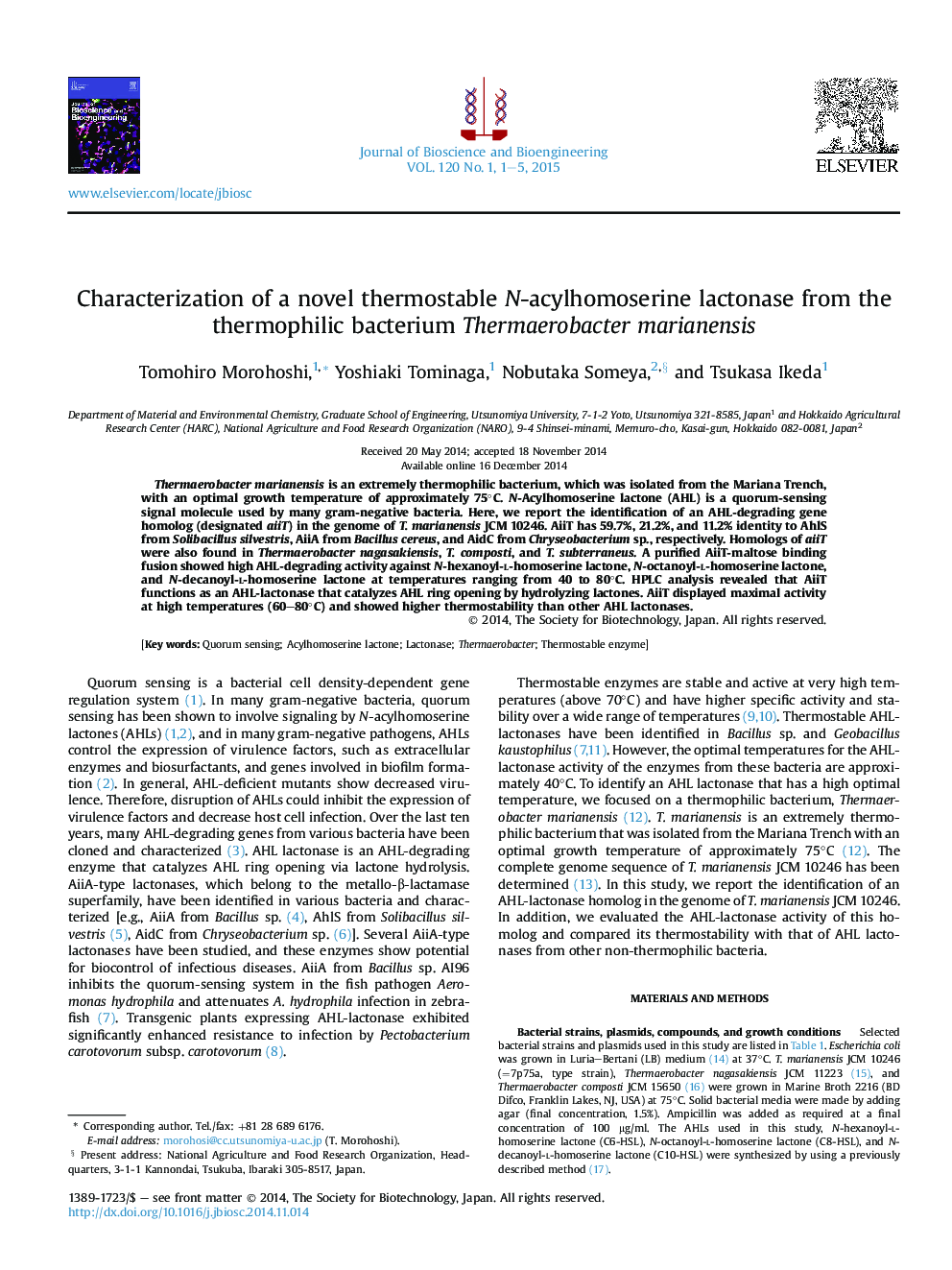| Article ID | Journal | Published Year | Pages | File Type |
|---|---|---|---|---|
| 20259 | Journal of Bioscience and Bioengineering | 2015 | 5 Pages |
Thermaerobacter marianensis is an extremely thermophilic bacterium, which was isolated from the Mariana Trench, with an optimal growth temperature of approximately 75°C. N-Acylhomoserine lactone (AHL) is a quorum-sensing signal molecule used by many gram-negative bacteria. Here, we report the identification of an AHL-degrading gene homolog (designated aiiT) in the genome of T. marianensis JCM 10246. AiiT has 59.7%, 21.2%, and 11.2% identity to AhlS from Solibacillus silvestris, AiiA from Bacillus cereus, and AidC from Chryseobacterium sp., respectively. Homologs of aiiT were also found in Thermaerobacter nagasakiensis, T. composti, and T. subterraneus. A purified AiiT-maltose binding fusion showed high AHL-degrading activity against N-hexanoyl-l-homoserine lactone, N-octanoyl-l-homoserine lactone, and N-decanoyl-l-homoserine lactone at temperatures ranging from 40 to 80°C. HPLC analysis revealed that AiiT functions as an AHL-lactonase that catalyzes AHL ring opening by hydrolyzing lactones. AiiT displayed maximal activity at high temperatures (60–80°C) and showed higher thermostability than other AHL lactonases.
